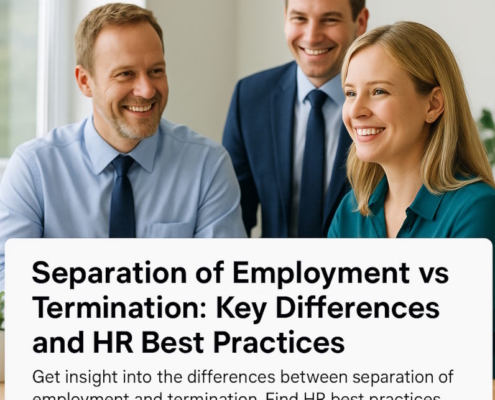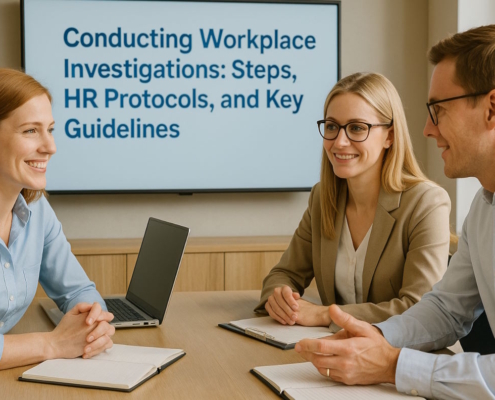Under California law, companies with at least five employees must provide new parents with 12 weeks of unpaid maternity leave. Similarly, companies with at least five employees must also grant up to four months of unpaid pregnancy-disability leave to workers who are unable to work due to pregnancy or childbirth.
When it comes to maternity leave, at present California employers are not required to provide paid leave. Still, there are ways to get money during this period. An employee can used earned paid time off, apply for state disability insurance, temporary disability pay, or take advantage of the Paid Family Leave Act. During maternity leave, employers must keep workers on their health insurance.
Employers are not allowed to discriminate against workers who take maternity or paternity leave that they are legally entitled to take. If an employer does discriminate against workers for taking their rightfully earned maternity or paternity leave, then employees can file a claim with California’s Department of Fair Employment and Housing. If that does not produce results or one wishes to escalate matters, then a lawsuit would be the next step.
Pregnancy Disability Leave
Pregnancy disability leave (PDL) is time off from work given to female employees, or employees with uteruses, who are unable to work because of their pregnancy. But how much time off are they allowed? In California, up to four months of unpaid leave may be used to by employees. The following requirements apply:
- The employee is mentally or physically disabled from the pregnancy, birth, or a related medical condition
- The employee’s company employs at least five people
Full-time and part-time workers are both able to take pregnancy leave. Recently-hired workers are also eligible to take pregnancy leave. Employees may also take the leave in increments instead of all at once.
What qualifies a person as disabled in this context? A doctor must testify that the employee cannot perform an essential job function because of certain conditions, such as:
- Severe morning sickness
- Gestational diabetes
- Preeclampsia
- Postpartum depression
- Miscarriage
- Pre-birth and post-birth care
- Other conditions requiring bed rest
Example: Allison has just given birth to a daughter. However, shortly after the birth, she developed post-partum depression, and her doctor thinks that returning to work may only aggravate the condition. Allison’s doctor provides her with a note explaining the issue, and Allison is able to take pregnancy disability leave.
By week 36 of their pregnancy, many workers qualify to take pregnancy leave (about one month before the due date). The method of giving birth also affects how much time off is granted. Vaginal births typically mean about six weeks of leave, assuming there were no complications. C-sections, meanwhile, warrant about eight weeks of unpaid leave due to their surgical nature.
After pregnancy leave runs out, an employee must be able to return to their job, or a similar position. The only exception to this would be if there was a legitimate business reason such as mass layoffs.
Maternity Leave
Family leave is time employees take away from work to spend time with, or bond with, their new baby. According to the California Family Rights Act (CFRA), male, female, trans, and nonbinary employees in California can take up to 12 weeks of unpaid family leave per year, so long as:
- The company has at least five employees
- The employee has worked for the employer for more than 12 months prior to the date of leave
- In the last 12-month period, the employee worked at least 1,250 hours
- The employee has a new child via birth, foster care, or adoption
Employees who give birth can take these family leave benefits after taking pregnancy disability leave. In total, they would get up to seven months off for one pregnancy.
Still, if one chooses, family leave can be taken in increments throughout one year. Employers can ask, however that only two of the increments last less than two weeks.
Example: After Avery gives birth to her son, she decides that she would only like to use two weeks of her maternity leave to start. A few months later, she takes another two weeks off to help her son through his next milestone. Another few months later, she does the same, this time taking one month off. One year after giving birth, Avery has taken the twelve weeks of maternity leave, only spaced out as suited her best.
Again, once family leave ends, an employee should be able to return to their same job, or a similar position. They should also be given a reasonable amount of time to catch up or get back to speed.
Reasonable Accommodation Leave
Reasonable accommodation leave is time off for impaired workers to get treatment and heal. This type of leave may apply to pregnancy individuals or new parents if the following apply:
- The employer is covered by California’s discrimination laws
- Due to a physical or mental disability, an employee cannot perform essential job duties
- If given leave, the employee will again be able to perform essential job duties
- The leave will not give the employer unfair hardship
Employees who meet the qualifications can take reasonable accommodation in addition to pregnancy disability leave and family leave. This leave may either be paid or unpaid – it depends on the particular company.
Whether Maternity Leave is Paid
It is important to know that employers are not required to give paid leave. Their only obligation is to make sure that an employee’s job is still open and waiting for them when they are ready to return. Still, there are ways for eligible employees to keep getting paid.
Accrued Paid Time Off
Employees can use accrued vacation or sick days toward maternity leave. Some employers may even require them to do so. This means that if a woman becomes pregnant, she might have to use her hypothetical ten days of vacation toward her recovery from childbirth.
Heath Insurance
Employees who are on pregnancy disability leave or on family leave are entitled to remain on their company’s health insurance.
Paid Family Leave Act (PFL)
Eligible employees can receive partial pay for six weeks (during a one-year period) in order to bond with their new child. The maximum weekly salary is capped at $1300).
Temporary Disability Pay
Employers are required to pay their employees on pregnancy disability leave in the same manner they would pay employees with non-pregnancy-related issues.
State Disability Insurance (SDI)
In order to be eligible for SDI, an employee must have paid at least $300 into the program for 5-18 months before the start date of the claim. Also, the employee must have a short-term disability related to pregnancy or giving birth. At present, the SDI program pays $194.91 to $1,299.43 per week.
Depending on the company, of course, some employers provide maternity leave as part of their company policy.
How to Request Maternity Leave
Depending on the company, some employers provide instructions in employee handbooks on how to request maternity leave. In some cases, requests must be written by hand, while in other cases oral requests are permitted.
It is good practice to give employers reasonable notice. This normally means no fewer than 30 days, barring a medical emergency (in which case, notify your employer as soon as possible).
In order to notify one’s employer about taking pregnancy disability leave, one should provide a note from one’s doctor or health care provider.
Getting Fired for Taking Maternity Leave
It is possible for companies with fewer than five workers to fire or demote employees who take pregnancy disability leave.
Similarly, under the following circumstances, employees may be fired or demoted if they take family leave:
- The company has fewer than five employees
- The employee had worked for less than 12 months for that company
- The employee worked less than 1,250 hours in the last 12 months
If the above conditions are not met, then firing or demoting a pregnant employee or new parent qualifies as discrimination. It is violating that individual’s leave rights.
An exception to this rule are workers employed by their spouses, parents, or children. California’s anti-discrimination laws do not protect these individuals. They also do not protect independent contractors, who are not entitled to time off.
Suing for Pregnancy Discrimination
If there is reason to believe an employee has been discriminated against because of their pregnancy, there are a few steps they should take. First, it would be advisable to try and resolve the matter in person with one’s manager, perhaps by scheduling a one-on-one meeting.
If that course does not work, the employee should then file a complaint with the California Department of Fair Employment and Housing (DFEH). Employees will have one year after the date of the violation during which they can file this complaint.
If the DFEH is unable to resolve the matter, then it will give the employee a right-to-sue letter, which will allow the employee to take the company to court. In order to launch a successful lawsuit, an employee will need to prove the following:
- California’s discrimination laws cover the employer
- The employer fired, demoted, or took a negative action against the employee
- The employer’s reason for doing so was the employee’s pregnancy, potential future pregnancy, or pregnancy-related disability
- The employer’s action caused the employee harm
After receiving the right-to-sue letter, employees have one year to file a lawsuit against their employer. A lawsuit can achieve any of the following for the employee:
- Compensatory damages (like lost wages)
- Punitory damages
- Job reinstatement
And of course, employers are not allowed to fire or retaliate against workers for filing a claim against them.
Example: After Jocelyn gives birth to her son, she is shocked to learn that she no longer has her job. She is only six weeks into her twelve weeks of unpaid maternity leave, and her employer has called to inform her that he can no longer wait for her to get back. He asks her to return immediately or lose her job, and she refuses because she has the right to the full twelve weeks of leave. Her employer fires her because of this. Jocelyn hires a lawyer and sues her employer for pregnancy discrimination. She knows that she is rightfully guaranteed her job during pregnancy leave. Jocelyn is successful in her lawsuit and is awarded damages.






















